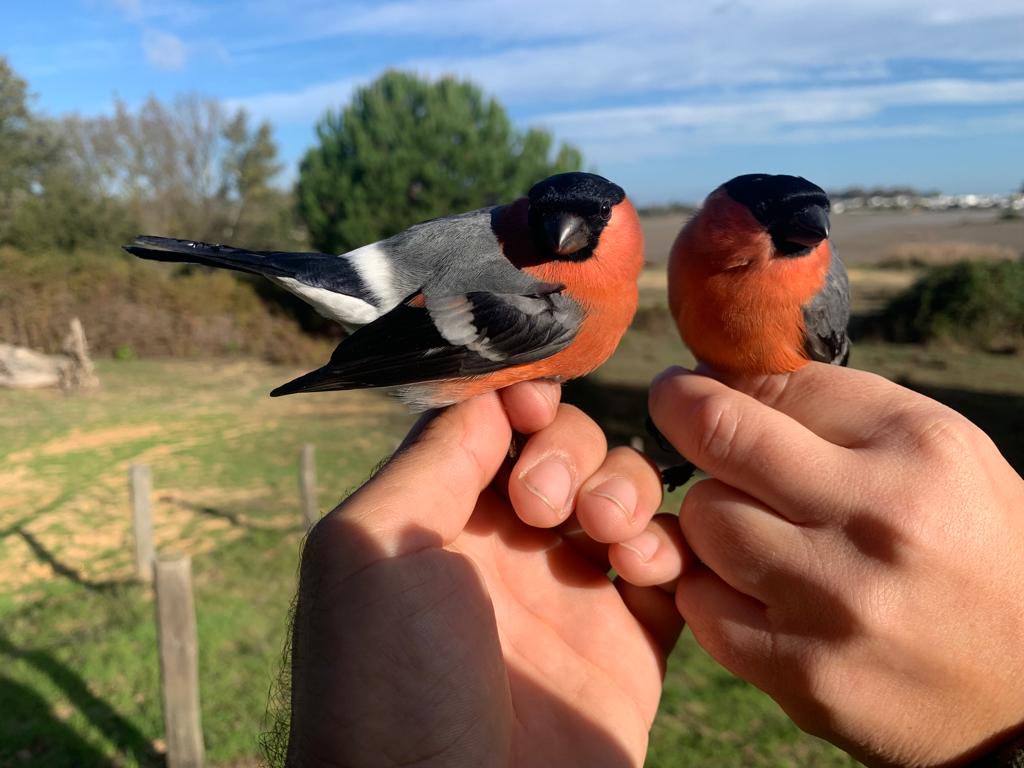
From September 1st to November 15th 2021, members of the ICTS-RBD Natural Processes Monitoring team carried out the ringing of passerine birds during the post-breeding migration at the Manecorro Ringing Station (Doñana National Park). This campaign has been the number 28, although with a reduced sampling effort of 5 days a week and only in the mornings, due to the special conditions generated by COVID-19.
A total of 1.400 individuals of 47 different species were captured, mainly passerines (Photo: Eurasian bullfinch (Pyrrhula pyrrhula) by Rubén Rodríguez Olivares). Among the most numerous species, three pre-Saharan migrants (Common chiffchaff Phylloscopus collybita, European robin Erithacus rubecula, and Eurasian blackcap Sylvia atricapilla) and one trans-Saharan migrant (European pied flytcatcher Ficedula hypoleuca).
The Monitoring team expected a low number of catches compared to years with higher sampling effort (mornings and afternoons, 7 days per week). However, this year had the lowest number of captures of the entire series, including years with reduced effort (2.100 on average).
Most individuals captured in Doñana come from the British Islands and Central and Northern Europe. Data from recent years show a negative trend in the number of catches of many species that migrate through Doñana or stay in winter. Many of these species show a population decline across Europe in the last decades caused by habitat loss and agriculture intensification and pesticide use. Changes in climate could also explain these low number of catches, since it could affect migration timing and/or migratory route.
The time series of 28 years in post-breeding migration ringing of passerines birds in Doñana (1994-2021) has resulted in more than 30 scientific publications so far, and highlights the importance of this natural area for the monitoring and conservation of passerine migratory birds in Southern Europe.
http://icts.ebd.csic.es/inicio/-/asset_publisher/XK7SruSAAhGq/content/results-of-the-post-breeding-passerine-migration-campaign-at-the-manecorro-ringing-station-in-the-donana-natural-ar-1?inheritRedirect=false&redirect=http%3A%2F%2Ficts.ebd.csic.es%2Finicio%3Fp_p_id%3D101_INSTANCE_XK7SruSAAhGq%26p_p_lifecycle%3D0%26p_p_state%3Dnormal%26p_p_mode%3Dview%26p_p_col_id%3D_118_INSTANCE_BHgplqOrdUaC__column-1%26p_p_col_count%3D1 


